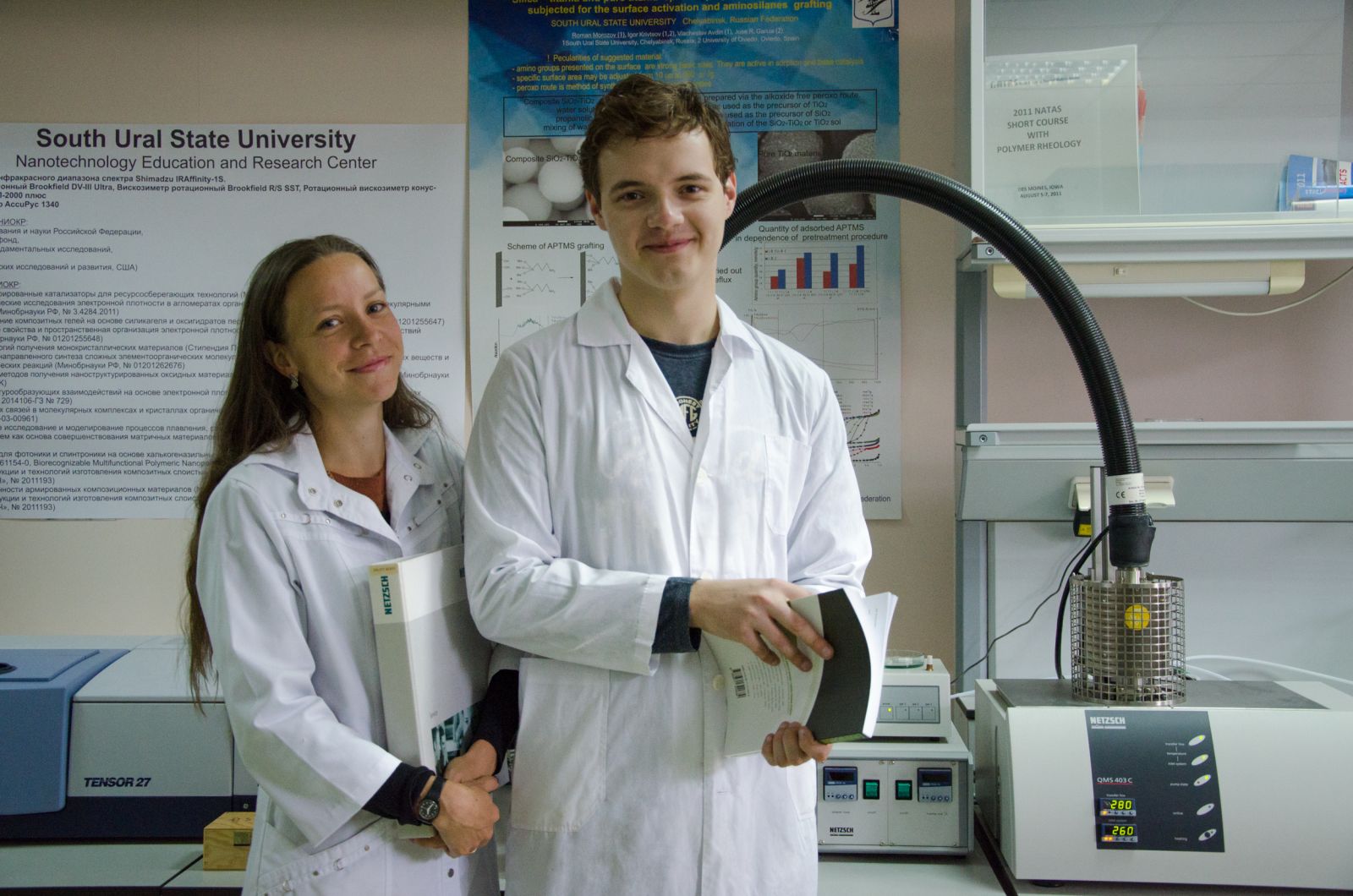The SUSU Multiscale Modelling of Polyfunctional Compounds Laboratory was created in 2016 within Project 5-100. It is headed by Ph.D., Professor of University of Central Florida, USA, Artem Masunov. The laboratory is conducting research in the intersection of chemistry, materials science and informatics, which aims at studying the properties of chemical bonds and intermolecular interactions. We spoke about the importance of this field and the fulfilled projects to the laboratory’s supervisor on behalf of SUSU, Doctor of Sciences (Chemistry), Professor Ekaterina Bartashevich.
– In which fields research is being conducted at the laboratory?
– The fields of research by our laboratory are entirely related to fundamental studies in theoretical chemistry. The chemists have always seen chemical bonds as the key problem, since the forming and breaking of chemical bonds leads to generation of new compounds, and these new compounds with targeted physical and chemical properties open the possibility of producing the in-demand materials. Today, we have the understanding of along which trends we need to develop: this must be not an intuitive searching for new properties, but rather a task-oriented rational designing of the structures of multicomponent compounds. With the help of evolutionary algorithms, the structures of atomic-molecular systems are generated, and the created models allow to get an understanding of how a structure influences a substance’s properties and predict the useful properties. Therefore, the components, structure and chemical bond determine the properties of a potential material.
– Which scientific projects are currently being fulfilled by the staff of the Multiscale Modelling of Polyfunctional Compounds Laboratory?
– We see our mission as providing the SUSU’s important global fields of materials science and ecology with data, information and knowledge related to the structures and properties of chemical compounds. Jointly with University of Delhi, we filed an application for a grant to the Russian Foundation for Basic Research (RFBR). Our colleagues from India managed to successfully synthesize nanocomposite materials based on halloysite with organic molecules — calix[4]arenes. These nanomaterials can identify organic pollutants, for instance pesticides, at very low concentrations of the latter ones. Now we have a task on building reliable structural models, which could help improve the properties of this material.
– What are the results of the laboratory’s research activity as of today?
– It’s a well-known fact that the year of 2019 is proclaimed as the International Year of the Periodic Table of Chemical Elements. Systematization of chemical bonds as per Mendeleev's Table’s principles, and namely categorizing the halogen, chalcogen, pnicogen, and tetrel bonds — these are the newest projects by IUPAC (the International Union of Pure and Applied Chemistry). This year, our research group is completing its fundamental research project, supported by RFBR, within which we have developed and applied an electronic criterion allowing for reliable classification of such chemical bonds. Earlier we focused on the halogen bonds of iodine in crystals of organic compounds. With regard to their strength, stability and influencing a substance’s properties, those could be compared to hydrogen bonds, the influence of which on the properties of vital compounds (for example, proteins or nucleic acids) is well known even to school pupils. The halogen bonds of iodine can induce nonlinear optical properties in organic monocrystals and influence their plasticity. Systematization of not the elements but their chemical bonds will allow to give explained predictions of the properties of multicomponent compounds.
.jpg)
– What are the plans for developing the Multiscale Modelling of Polyfunctional Compounds Laboratory in the future?
– Among the today’s relevant tasks are the development of multicomponent systems, with nanocomposite materials being part of them. We hope to be of help for solving of the tasks being dealt with by the research group of Sergey Sapozhnikov and Oleg Kudryavtsev, who are studying composite materials based on carbon fibre and organic polymers.
Moreover, the cross-disciplinary character of our research requires certain skills combining computer modelling and the ability to think as a chemist. That is why our crucial task is the participation in elaborating a new educational programme. For instance, Chemical Informatics could become such a field of training specialists capable of designing properties of the materials of the future.
– On June 1st, within the frameworks of the International Scientific Council, the results of work by the international research laboratories were presented. What recommendations were given by the SUSU ISC members to your laboratory on its development?
– We are grateful to the members of the International Scientific Council, who were carefully listening to our report on the results of our laboratory’s work and who made valuable comments. In particular, the problem was mentioned with regard to intensive studying of carbon-bound compounds (carbon oxides, carbon-based materials). This is the promising field, which we should pay attention to, and we understand that we need to focus our efforts on it.

– What practical use can the research results by the Multiscale Modelling of Polyfunctional Compounds Laboratory find in the future?
– Undoubtedly, they will find application in creating the materials of the future. We can only fantasize on what’s going to happen in 50 or 100 years. For instance, it would be great to use flexible electronics. I believe, more accurate, fast and safe gadgets will be engineered. Anyway, it’s the new materials that will make our life more comfortable. Moreover, the future belongs to those technologies, which will help us ensure and support our health. That is why we need a quick and clear understanding of which compounds are hazardous for people, and which will be of use.




